A captivating soundscape can heighten the experience of movies, music, and games, making the investment in high-quality speakers worth every penny. However, the market is teeming with a variety of speaker types, making it difficult for consumers to make informed decisions.
This article will delve into different categories of speakers based on their physical properties, connectivity, frequency range, application, and location.
By the end, you should have a better understanding of the type of speaker best suited to your specific needs.
Types of Speakers by Size and Location
1. Bookshelf Speakers
Bookshelf speakers are small-to-medium-sized speakers that can be placed on a shelf, desk, or stand. They are ideal for use in home audio systems, offering the convenience of size and the quality of sound. Their compact nature makes them perfect for smaller rooms or spaces where a large, floor-standing speaker would be impractical.
High-quality bookshelf speakers can deliver exceptional audio performance, delivering a balance of treble, midrange, and bass frequencies. They’re ideal for stereo setups or as part of a larger home theater system. Some models even boast advanced features like Bluetooth connectivity or built-in amplifiers.
Our Top Choice for Bookshelf Speakers
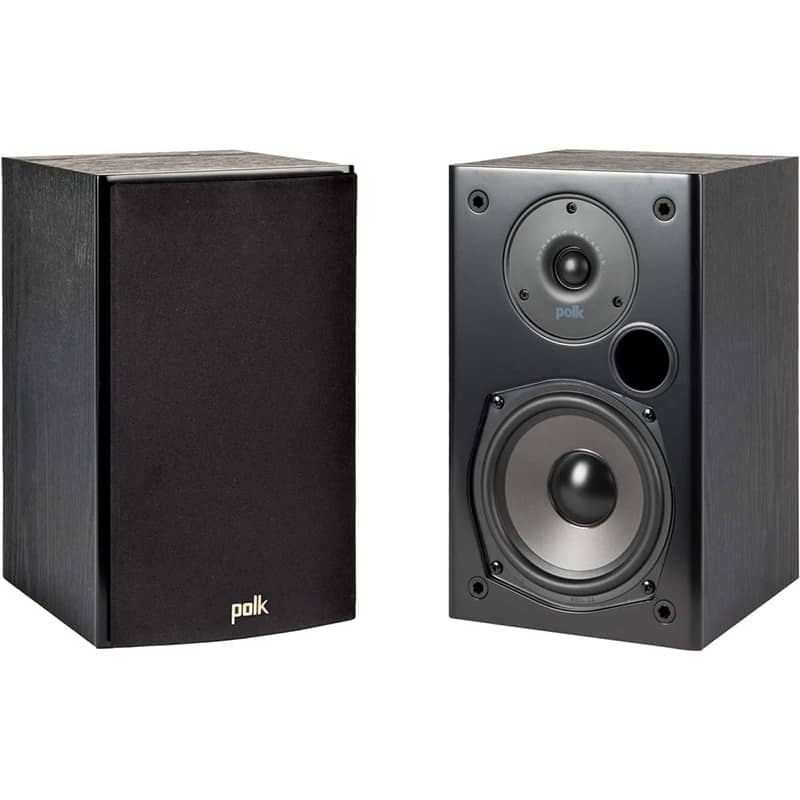
2. Tower Speakers
Also known as floor-standing speakers, tower speakers are tall, powerful audio equipment pieces designed to sit on the floor. They usually house multiple speaker drivers, which contribute to a broader frequency range and more substantial sound output. As a result, they often deliver a more vibrant, rich, and immersive audio experience than their smaller counterparts.
However, the large size means they take up more space, making them less ideal for smaller rooms or apartments. Despite the space requirements, their performance and power make them a favorite for audiophiles and home theater enthusiasts.
Our Top Choice for Tower Speakers
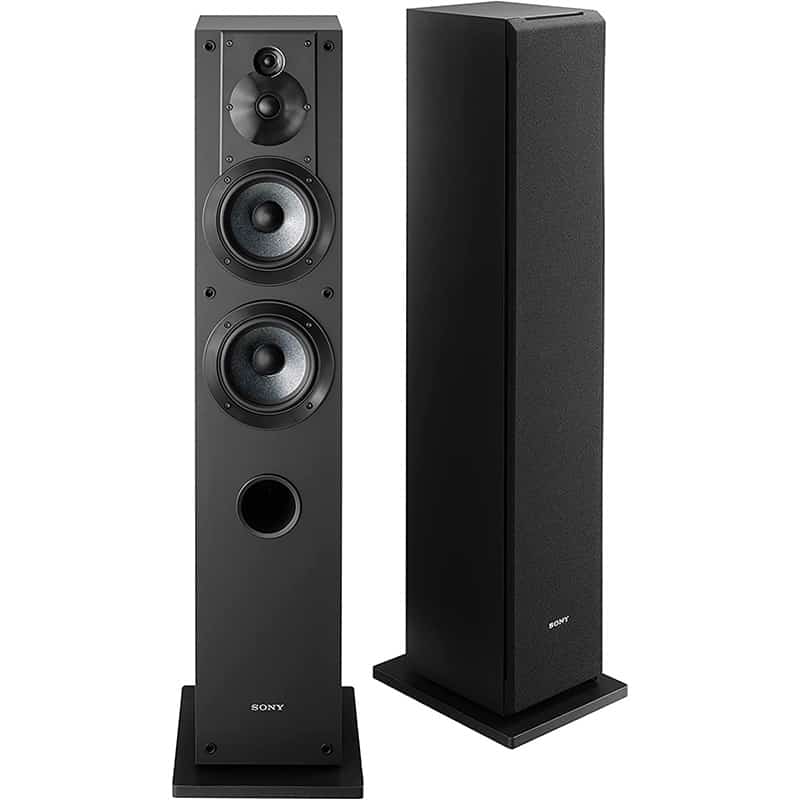
3. Soundbar Speakers
A soundbar is a type of speaker designed to accompany TVs. It is typically long, slim, and houses multiple speaker drivers within a single cabinet. The primary purpose of a soundbar is to enhance the audio quality of your television, providing a sound that’s vastly superior to the built-in speakers of your TV.
Soundbars are often positioned above or below the TV and are perfect for small to medium-sized rooms. Although they may not compete with the audio quality of a full-fledged home theater system, they offer a significant upgrade over standard TV speakers, making them ideal for movie buffs and casual music listeners alike.
Our Top Choice for Soundbar Speakers
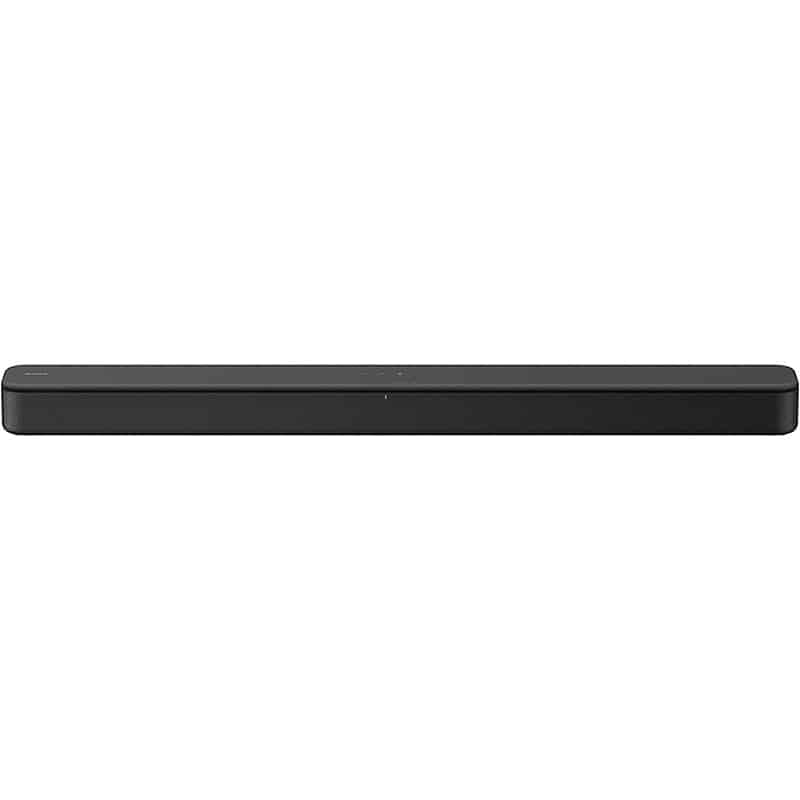
4. In-ceiling and In-wall Speakers
For those who favor minimalism and dislike clutter, in-ceiling and in-wall speakers are a great option. These speakers are mounted directly into the ceiling or wall, providing an excellent sound experience without taking up floor or shelf space. In-ceiling and in-wall speakers blend seamlessly with the decor, maintaining a clean aesthetic look.
However, installation can be complicated, often requiring professional help. It’s also essential to ensure that your room’s acoustics won’t negatively impact the speakers’ sound performance.
Our Top Choice for In-Ceiling Speakers
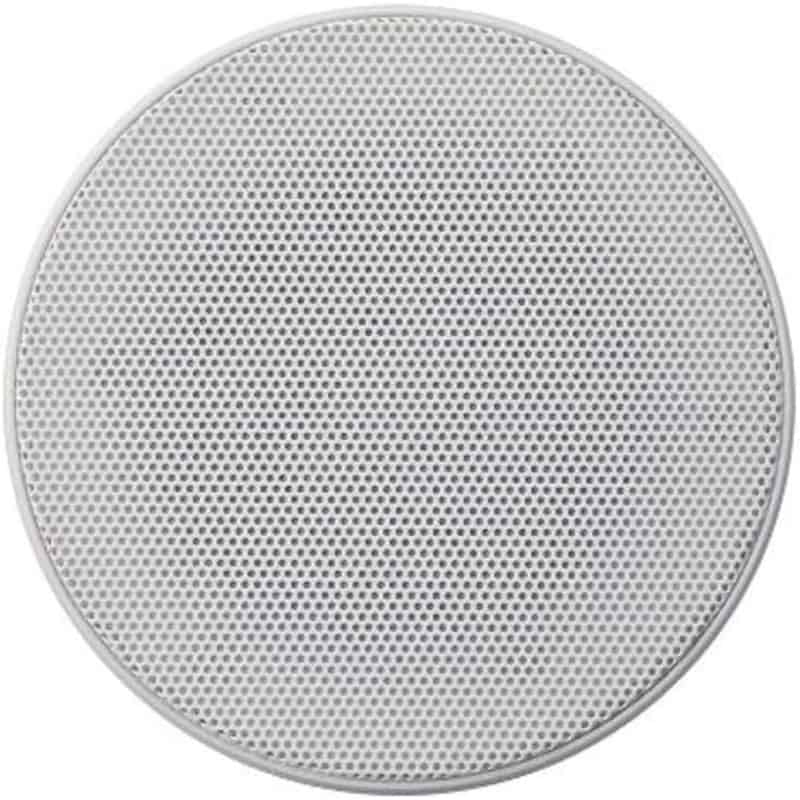
5. Outdoor Speakers
Designed to withstand the elements, these audio speakers are built for patios, decks, swimming pools, and gardens. They’re typically weatherproof and robust, capable of delivering quality sound over a wide area. With outdoor speakers, you can enjoy your favorite music while barbecuing or having a pool party.
Remember, outdoor speakers are designed to endure the elements, but it’s still a good idea to provide some shelter or bring them indoors during extreme weather conditions.
Our Top Choice for Outdoor Speakers
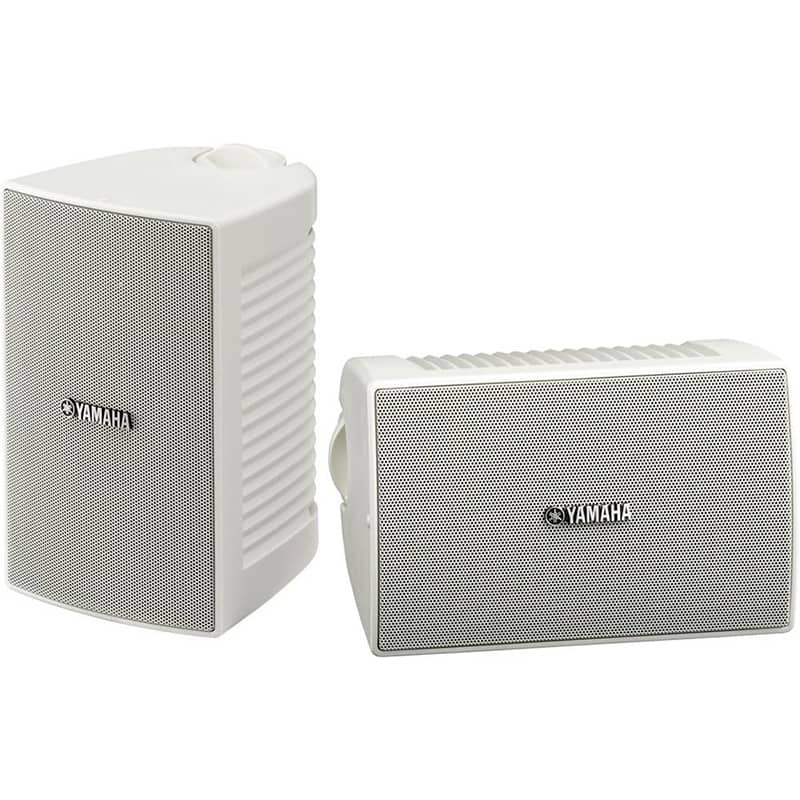
6. Portable Bluetooth Speakers
As the name suggests, portable speakers are designed to be lightweight and easy to carry. They often feature built-in batteries, allowing you to enjoy music without a power source nearby. Portable speakers can range from small Bluetooth speakers for personal use to larger, more powerful models suitable for outdoor parties.
The key advantage of portable speakers is their versatility. Whether you’re going to the beach, the park, or simply another room in your house, you can bring your music with you.
Our Top Choice for Portable Bluetooth Speakers
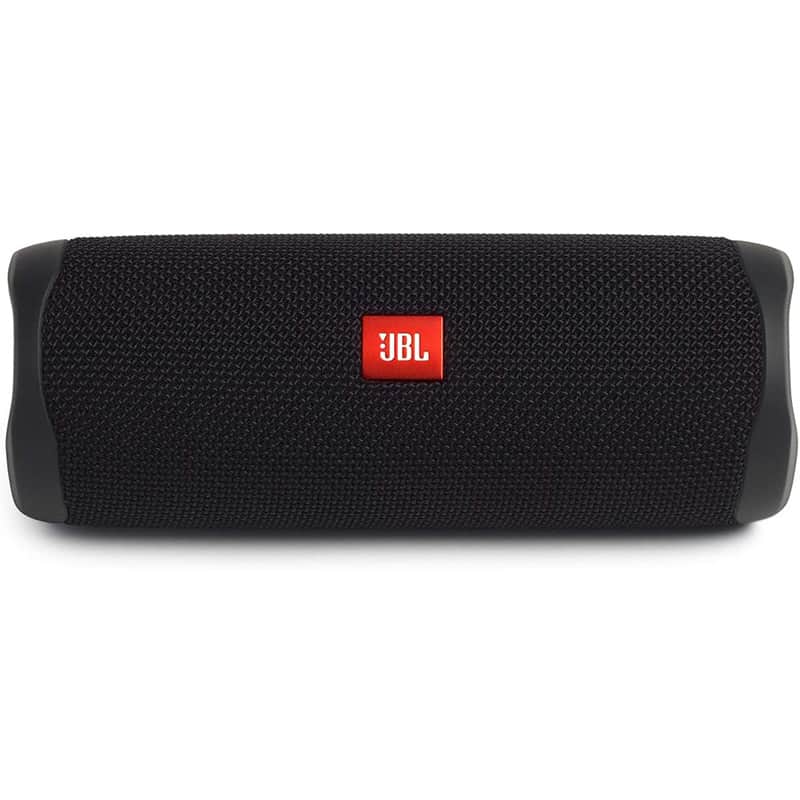
Types of Speakers by Frequency Range
1. Subwoofers
Subwoofers are designed to reproduce the lowest audio frequencies, often referred to as bass. They play a crucial role in creating a rich, full-bodied sound by delivering deep, resonant tones that complete the audio spectrum. From the rumbling lows in a movie soundtrack to the deep bass lines in music, a good subwoofer can significantly enhance your listening experience with very low bass frequencies.
Our Top Choice for Subwoofer

2. Mid-range Speakers
Midrange speakers fill the gap between tweeters and subwoofers, reproducing frequencies that make up the majority of sounds we hear. They handle the ‘middle’ range of the spectrum, which includes most musical notes and human voices.
For music lovers, the midrange speaker is vital because it reproduces the tonal qualities of instruments and voices with accuracy using a mid-range driver. In a well-balanced sound system, the mid-range speaker ensures that every nuance and detail of the audio is faithfully reproduced to produce great sound quality.
Our Top Choice for Mid-range Speakers
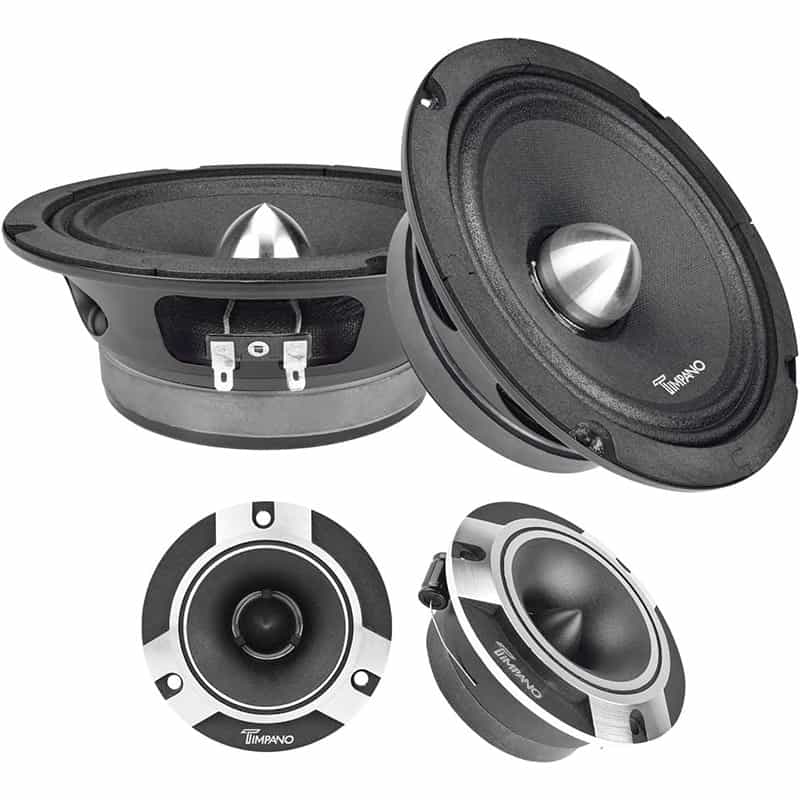
3. Tweeters
Tweeter speakers are responsible for producing the highest audio frequencies. Their job is to reproduce the ‘treble’ sounds, like the higher notes on a piano, the ring of cymbals, or the detail in a singer’s voice. They are small, often dome-shaped, and usually constructed from lightweight materials to rapidly move and stop without distortion.
In a well-designed speaker system, tweeters deliver the high-frequency sounds with clarity and without harshness, adding sparkle and airiness to the overall sound.
Our Top Choice for Tweeters
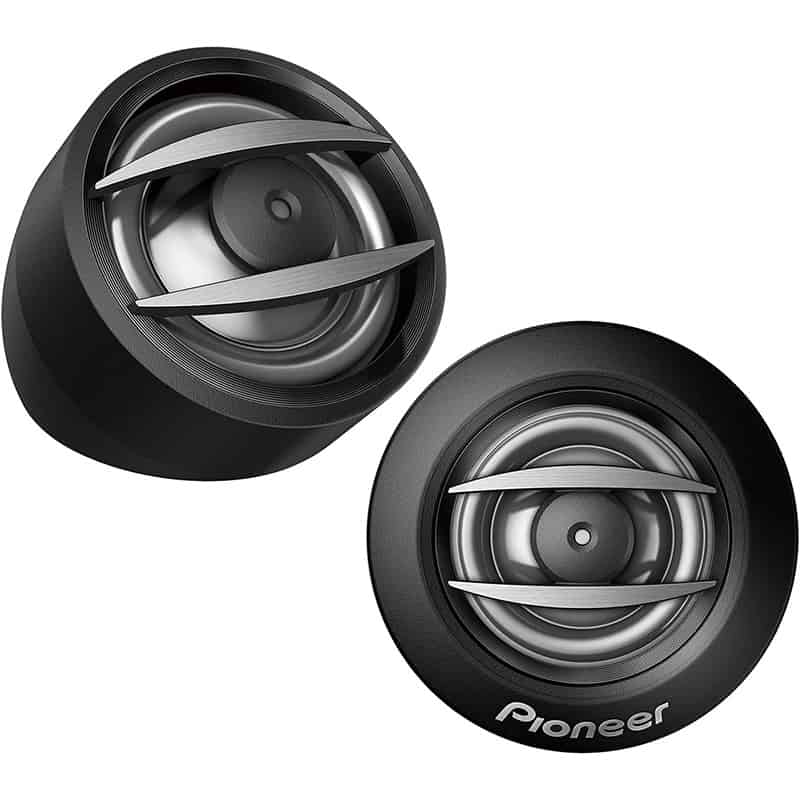
Types of Speakers by Application
1. Surround Sound Speakers
Surround sound speakers create an immersive sound experience by producing audio from different directions. In a home theater system, they provide the sense of being ‘surrounded’ by the action, enhancing the viewing and listening experience.
In a standard 5.1 surround sound system, there are five main speakers and one subwoofer. The speakers include the front left, center, and right speakers, which handle most of the on-screen action and dialogue, and two surround speakers placed to the sides or behind the seating area.
Our Top Choice for Surround Sound Speakers
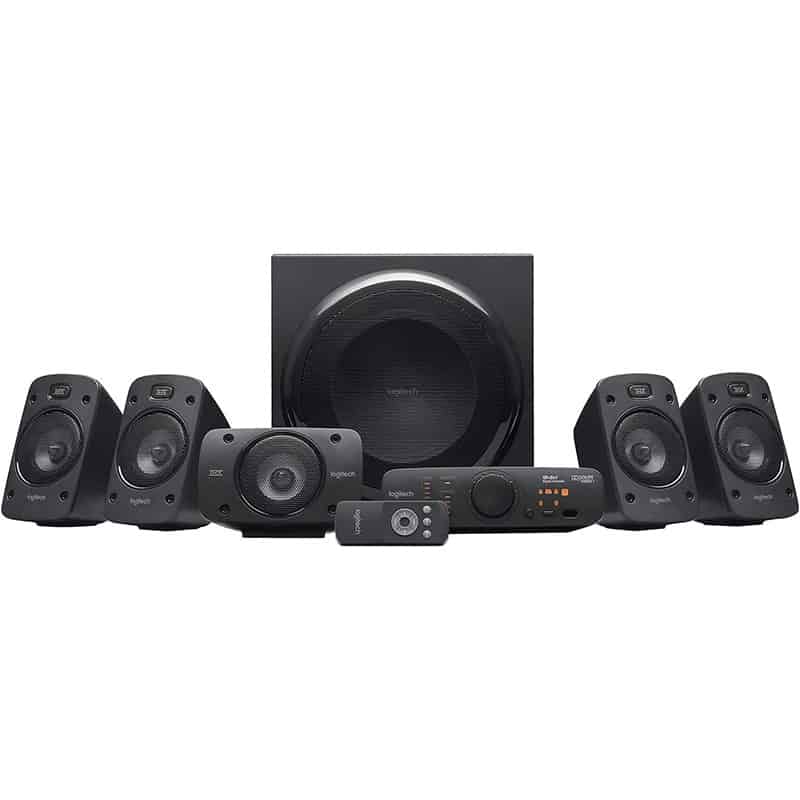
2. Center Channel Speakers
The center channel speaker plays a crucial role in a surround sound setup. This speaker is responsible for delivering the dialogue in movies and TV shows. Since most on-screen action and conversations are centered on your TV, the center channel anchors the sound to the picture, creating a more realistic and immersive experience.
Our Top Choice for Center Channel Speakers
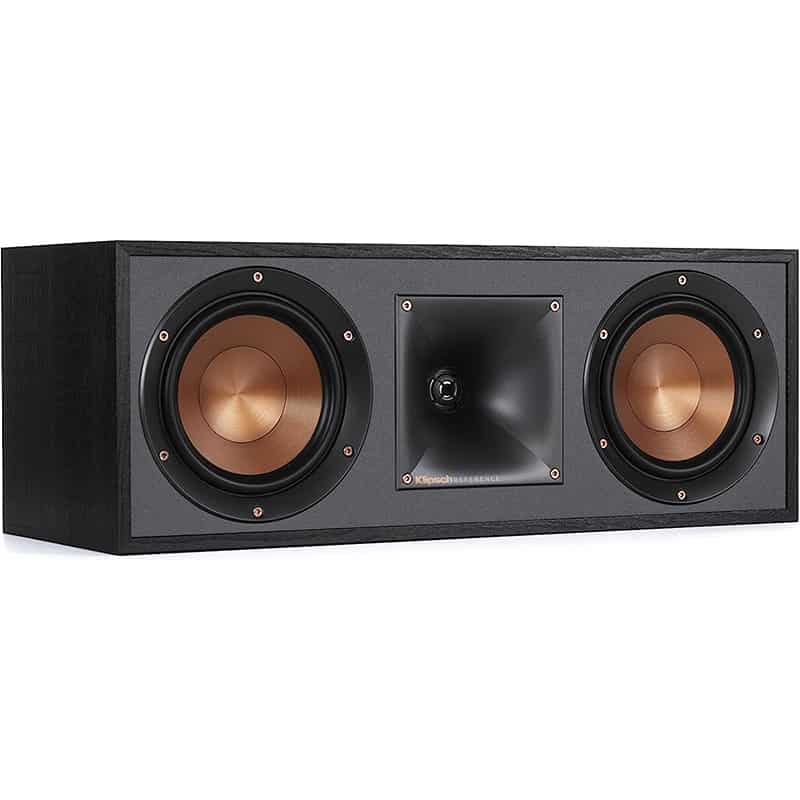
3. Studio Monitors
Studio monitors are high-quality speakers used by audio professionals for music production and mixing. These speakers offer an accurate, ‘flat’ response, meaning they do not color the sound. This accuracy allows producers and mixers to hear each note and instrument as it truly sounds, enabling them to make precise adjustments to their recordings.
Our Top Choice for Studio Monitors

Types of Speakers by Connectivity
1. Wired Speakers
Wired speakers connect to the audio source via physical cables. This method provides a stable, high-quality connection, which is crucial for high-resolution audio. Wired speakers are prevalent in professional settings like recording studios and concerts, as well as in high-end home audio systems.
2. Wireless Speakers
Wireless speakers remove the need for physical cables by using Bluetooth or Wi-Fi to connect to the audio source. These speakers offer the convenience of streaming music from various devices, including smartphones, tablets, and computers.
Bluetooth speakers are ideal for portable use due to their range and power-efficiency. Wi-Fi speakers, on the other hand, offer higher audio quality and multi-room capability, making them a great option for home audio systems.
3. Smart Speakers
Smart speakers combine wireless speaker technology with voice recognition software. These devices, which include popular models like Amazon Echo and Google Home, can stream music, answer questions, set alarms, and even control other smart home devices using voice commands. As smart home technology becomes more prevalent, smart speakers continue to increase in popularity.
Selecting the right speaker requires careful consideration of several factors. The size and acoustics of the room, your listening habits, the devices you plan to use, and of course, your budget, all play a significant role in determining the best fit for you. Whether it’s a compact bookshelf speaker for a small apartment, a powerful tower speaker for a spacious living room, or a portable Bluetooth speaker for on-the-go listening, there’s a speaker out there to meet your needs.
Specialty Speakers
There are also some specialty speakers designed for specific purposes or situations. Here are a few examples:
1. Computer Speakers
Computer speakers are designed to be connected to a computer for enhancing the audio experience, whether that’s for gaming, watching movies, or listening to music. They can be a simple stereo pair, include a subwoofer for better bass response (2.1 system), or even offer a full surround sound setup.
2. Car Speakers
Car speakers are specifically designed to be used in the automotive environment. They are typically built to withstand the harsh conditions inside a vehicle, including heat and humidity. Car speakers can dramatically improve the quality of audio in your vehicle, and they come in various forms like component speakers, coaxial speakers, and subwoofers.
3. PA Speakers
PA (Public Address) speakers are designed to project sound across large spaces, such as concert venues, schools, or conference rooms. They are engineered to deliver clear and robust audio to a broad audience. PA speakers are a crucial part of any live sound setup, alongside mixers, amplifiers, and microphones.
4. Satellite Speakers
Satellite speakers are small speakers used in a surround sound setup. They are usually used in combination with a subwoofer (forming a system known as 2.1, 5.1, etc.) to cover low-frequency sounds. Their compact size allows for flexibility in placement, but they rely on the subwoofer to deliver the full sound spectrum.
Speaker Design Concepts
Speaker designs can vary significantly, with each design offering its unique characteristics and advantages. Here are some common speaker design concepts:
1. Acoustic Suspension
Acoustic suspension (or sealed) design refers to a speaker system in which the drivers are enclosed in a sealed box. The design is intended to improve bass response, despite the drivers’ size or quality. The air inside the cabinet acts as a spring, which helps control the movement of the driver.
2. Bass Reflex
Bass reflex speakers are the most common design you’ll find. They feature a port or vent in the speaker enclosure to increase low-frequency sound waves and improve efficiency. The port allows the back wave of the speaker cone to contribute to the overall sound. However, if not designed well, these types of speakers may produce port noise or less precise bass notes.
3. Electrostatic Speakers
Electrostatic speakers are a type of loudspeaker design that uses a thin diaphragm over two stationary conductive panels to produce sound. These speakers are known for their exceptional clarity and imaging, though they can be challenging to place correctly in a room due to their size and directional sound.
4. Horn Speakers
Horn speakers utilize a horn structure to couple the speaker driver’s sound into the air. This design improves efficiency and directivity, allowing the sound to project further with less distortion. Horn speakers are often used in PA systems, but they also have a niche in home audio, especially among audiophiles who appreciate their dynamic sound.
5. Planar Magnetic Speakers
Planar magnetic speakers use a thin, flat diaphragm with a conductor pattern to create sound. They are known for their detailed and accurate sound reproduction, especially in midrange frequencies. They can be large and require careful placement in a room for the best sound.
Speaker Materials
The materials used in speaker construction can significantly impact the sound they produce:
1. Cabinet Materials
The cabinet or enclosure of a speaker plays a critical role in its sound. Most speaker cabinets are made of wood or MDF (Medium Density Fiberboard) due to their acoustically friendly properties. However, some speakers use materials like plastic, metal, or even concrete. The key is that the material should be rigid and non-resonant to avoid coloration of the sound.
2. Driver Materials
Different materials are used to construct speaker drivers, each with its own sonic characteristics. Common materials for woofers include paper (for its lightness and responsiveness), plastic or metal (for their rigidity), and Kevlar or carbon fiber (for a combination of lightness and rigidity). Tweeters, on the other hand, often use soft materials like silk or hard materials like metal, each offering different sound characteristics.
When selecting speakers, it’s essential to consider your listening preferences and the type of music or audio content you typically enjoy. Each type of speaker, design, and material brings something unique to the table, and understanding these differences can guide you towards the perfect sound system for your home, office, or any setting. Remember, the right speakers for you are the ones that bring you the most enjoyment and satisfaction from your audio experience.
The Digital Age of Speakers
The rise of digital technology has revolutionized the way we use speakers. Here’s a closer look at some of these advancements:
1. Wireless Speakers
Wireless speakers have become increasingly popular due to their convenience and versatility. They use technologies like Bluetooth or Wi-Fi to connect to various devices, eliminating the need for cables. Some wireless speakers are portable, with built-in batteries for on-the-go use, while others are designed for home use as part of a multi-room audio system.
2. Smart Speakers
Smart speakers take wireless technology a step further by integrating voice-activated virtual assistants like Amazon’s Alexa, Google Assistant, or Apple’s Siri. These speakers can do much more than just play music. They can answer questions, control smart home devices, and even order products online. They provide a hands-free, voice-activated way to access information and entertainment.
3. Soundbars
Soundbars are a type of speaker system designed to accompany modern flat-screen TVs. They are long, slim bars containing several speaker drivers. Soundbars are a convenient way to improve TV audio without the complexity and space requirements of a full surround sound system. Some even have wireless subwoofers or surround speakers for a more immersive audio experience.
4. Networked Audio Systems
With advancements in Wi-Fi technology and streaming services, networked audio systems have become popular. These systems use speakers connected to your home network, allowing you to stream music throughout your home seamlessly. Networked systems can range from a couple of speakers in different rooms to a whole-house audio setup.
The Art of Speaker Placement
Where you place your speakers can have a significant impact on the sound quality. Here are some tips for optimal speaker placement:
1. Stereo Speakers
In a stereo setup, place the speakers to form an equilateral triangle with your listening position. They should be angled slightly inward, facing the listener. This setup creates a soundstage with a good sense of depth and width.
2. Surround Sound Systems
In a surround sound setup, the front left and right speakers should be placed similarly to a stereo setup. The center channel should be directly above or below the TV, while the surround speakers should be to the sides and slightly behind the listening position. If there’s a subwoofer, it’s placement can be more flexible, but a corner is often a good starting point.
This is a popular setup with ceiling speakers as having multiple speakers above you can create the ultimate surround sound experience. In-ceiling speakers are also common for a home theater setup and professional home speaker systems.
3. Room Acoustics
Pay attention to the room’s acoustics. Hard surfaces reflect sound, which can cause echoes or make the sound seem harsh. Soft materials, like carpets and curtains, can help absorb unwanted sound reflections. Room correction technology, available in some modern audio receivers, can also help optimize the sound for the room.
The world of speakers is wide and fascinating, with a multitude of choices and aspects to explore. Whether you’re an audiophile seeking the ultimate sound experience or someone who simply enjoys good music, understanding the basics of speakers will undoubtedly enhance your audio journey. The ongoing advancements in speaker technology promise an exciting future for sound reproduction, so keep your ears open!
Advancements in Speaker Materials
In the pursuit of audio fidelity, speaker manufacturers have experimented with different materials for speaker cones, the part of the speaker that vibrates to create sound. Here’s a look at a few notable materials:
1. Paper
Paper was the material of choice for many early speakers because of its lightness and rigidity. Even today, many high-end speakers use treated paper cones. Paper can produce a warm sound with good overall balance, but it can be susceptible to moisture and aging.
2. Plastic
Many modern, lower-cost speakers use plastic cones, often polypropylene. It’s light, cheap, and resistant to moisture. However, it may not deliver the same level of detail or warmth as some other materials.
3. Metal
Some speaker cones, especially tweeters that reproduce high frequencies, are made of metal. Metals like aluminum or titanium can deliver a very detailed, precise sound. However, they can sometimes sound harsh if not well-designed.
4. Composite Materials
Many high-end speakers use composite materials for their cones. These can include mixes of paper and plastic, carbon fiber, or kevlar. Composite materials can combine the best attributes of other materials, like the warmth of paper and the detail of metal.
Speaker Enclosures and Design
The design and materials of the speaker enclosure, or cabinet, also significantly influence sound quality.
1. Bass Reflex
Many speakers use a bass reflex design, which includes a port or vent that allows air to move in and out of the enclosure. This design can deliver deeper bass from a smaller cabinet, but it can also lead to less precise bass reproduction.
2. Acoustic Suspension
An acoustic suspension design uses a sealed enclosure. While it may not deliver as much bass as a bass reflex design, it can provide more precise bass reproduction.
3. Material Considerations
Wood, particularly medium-density fibreboard (MDF), is a common choice for speaker enclosures because of its good acoustic properties. However, some high-end speakers use other materials, like metal, concrete, or even marble, for their unique acoustic characteristics.
As you delve into the world of speakers, you’ll see that the possibilities are endless. The combination of design, materials, and technology all contribute to a speaker’s unique sound profile. Understanding these aspects can help you choose the speakers that best suit your preferences and listening environment. With the continuous evolution of speaker technology, we can expect even more innovative and exciting advancements in the world of audio in the years to come.
The Impact of Digital Signal Processing
As we move forward in the world of speaker technology, one cannot overlook the importance of Digital Signal Processing (DSP). DSP is a method used to manipulate analog information, such as sound or light, that has been converted into a digital form. DSP allows us to modify a signal in more complex ways than we could in its analog form.
Sound Reproduction and DSP
Speakers have physical limitations that inherently cause distortions. These distortions can make the speaker’s output sound different from the original recording. DSP can correct some of these distortions, resulting in a more accurate reproduction of the original sound.
Modern loudspeakers, especially smart speakers, widely use DSP. The technology enables them to offer features like room correction (adjusting the sound based on the room’s acoustics), beamforming (focusing the sound in a specific direction), and even creating a surround sound effect from a single speaker.
Wireless Technology and the Future of Speakers
In the era of smart homes and IoT (Internet of Things), wireless technology has become an integral part of speaker technology. Bluetooth and Wi-Fi have given rise to wireless speakers, soundbars, and smart speakers, enabling seamless integration with our smart devices and the convenience of placing speakers anywhere without worrying about running speaker wires.
Voice assistant technology has also been made possible through these advancements, with devices like Amazon Echo, Google Home, and Apple HomePod becoming household staples. These devices can play music, control smart home devices, and provide information, all with voice commands.
As we look towards the future, we might see more advancements in fields like holographic sound, where speakers use beamforming to create a 3D soundstage, making it sound like the instruments are placed around you in real space. Further advancements in DSP might also lead to better sound reproduction and smart features.
In conclusion, speakers have come a long way since their inception. They’ve evolved from simple mechanical devices into complex pieces of technology that can reproduce sound with incredible accuracy. Through materials science, digital technology, and clever design, we can now enjoy high-quality sound in our homes, cars, and even from our smartphones. As technology continues to advance, it’s exciting to think about what the future might hold for speaker technology.






